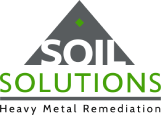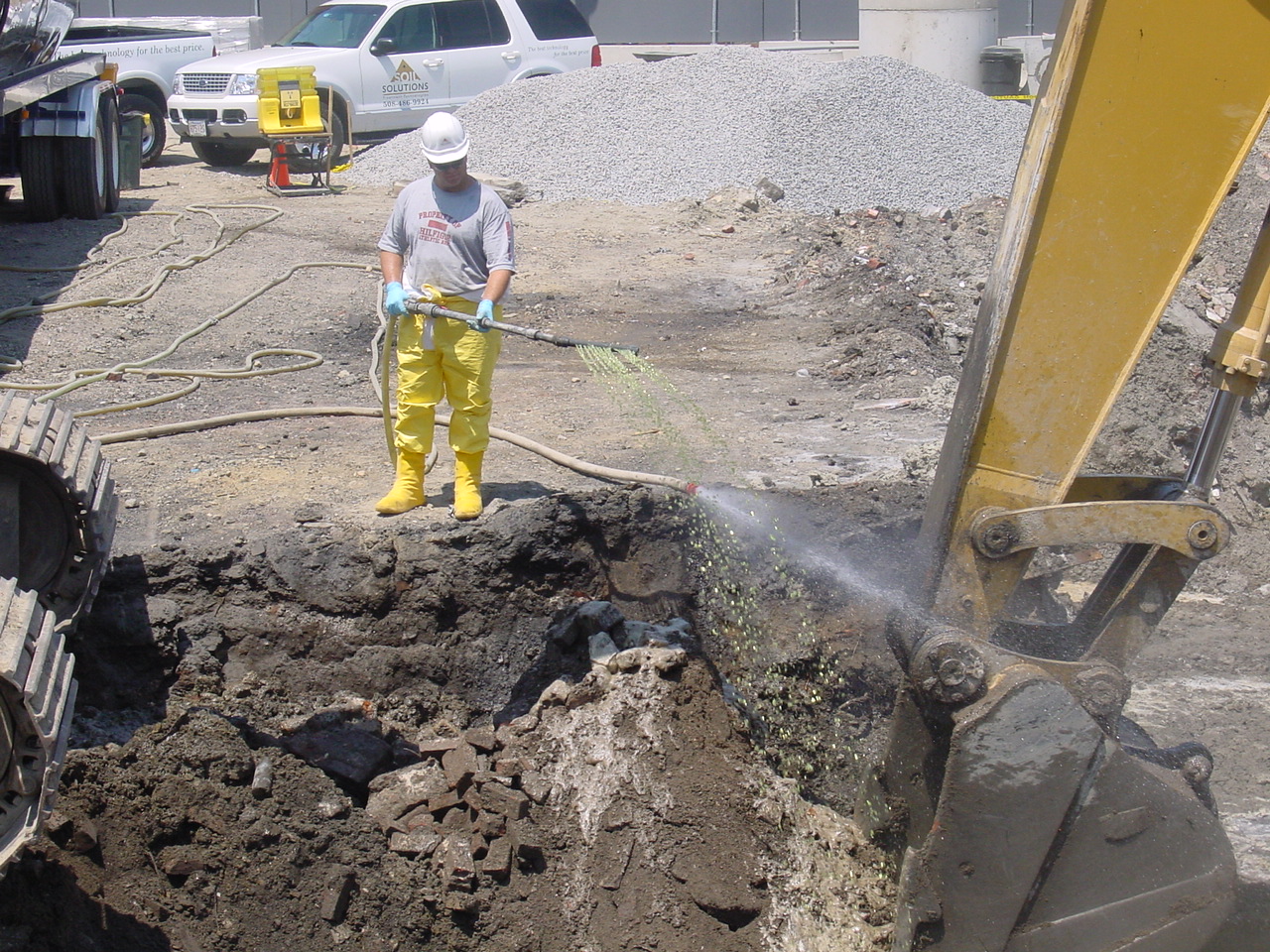SSWT Technology
Wet technology for in-situ or ex-situ remediation of complex heavy metals
Soil Solutions Wet Technology is based on molecular level conversion of soluble heavy metals such as lead, cadmium, and arsenic to insoluble non-hazardous minerals. The application of SSWT reagents creates minerals, including: exchange and bond precipitates; pH-log dependent complex precipitates; hydroxyapatites; and apatite's complexes with Chlorides, Iron and/or Aluminum. Depending on the waste character and composition, target Lead minerals such as chloropyromorphite and corkite are formed as these are extremely insoluble, nontoxic and stable.
Process methods and chemical supply equipment is engineered, designed and supplied by Soil Solutions, providing a custom solution for your brownfield.
Advantages
-
Single step, safe and rapid application method
-
Chemical supplies and support services provided by Soil Solutions
-
Commonly <1% wwb weight increase to stabilized material
-
Molecular packing often reduces waste volume up to 5%
-
Low cost, field-proven technology
-
No pug mill or ex-situ mixer equipment required
-
Wet method controls dust and metals dispersion
-
Rapid application up to 1000 TPD per two-man crew
-
No curing time required due to rate of mineral formation
-
Can be applied at any depth on material surface
-
Suitable for small restricted work areas
-
Can be applied on waste and material piles at any slope or elevation
Resources
A Customized Solution
The selection of the stabilizing agent best for your unique brownfield will depend on numerous variables, including dose requirements, moisture content, material permeability and grain size distribution, material type, project location, material reuse and disposal methods, and post-stabilization pH and toxicity objectives. Treatability studies will determine the best reagent and dose requirements.
Download the spec sheets to learn more about the SSWT application.
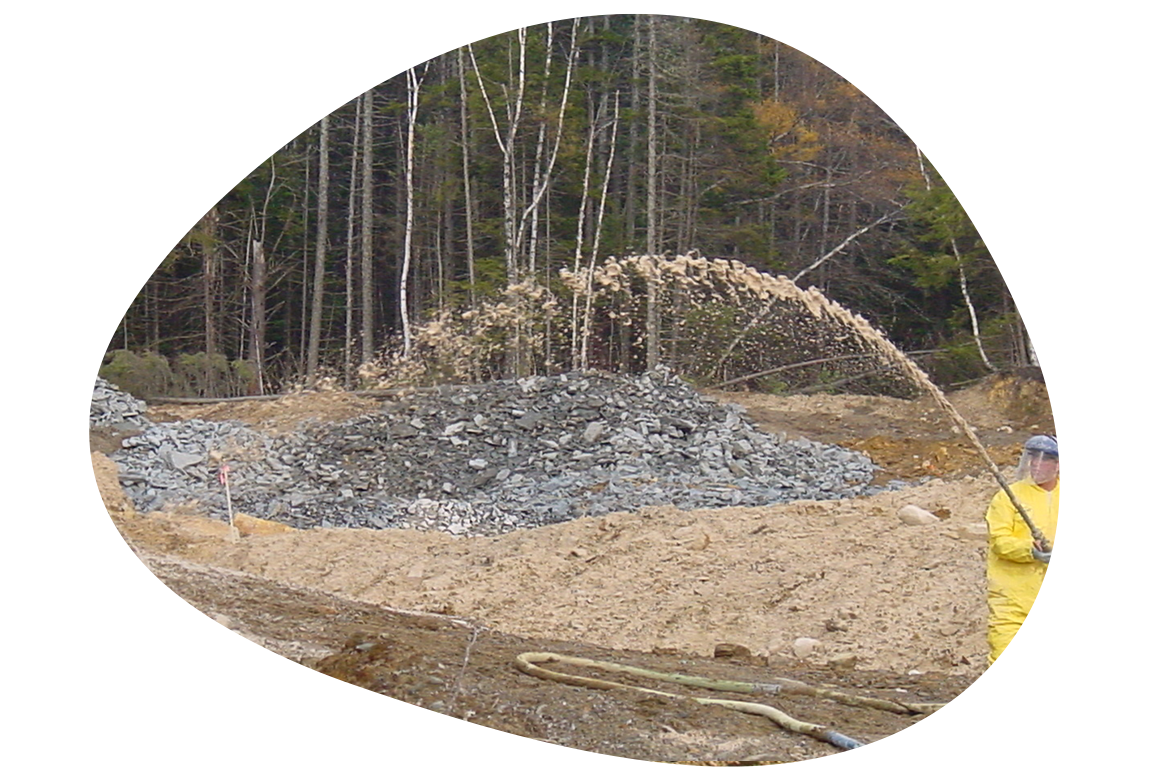
Treatment Applications
The SSWT wet reagent application is flexible and treatment methods can be designed to meet a variety of site specific needs. The methods can be modified to meet varying conditions while maintaining high daily output.
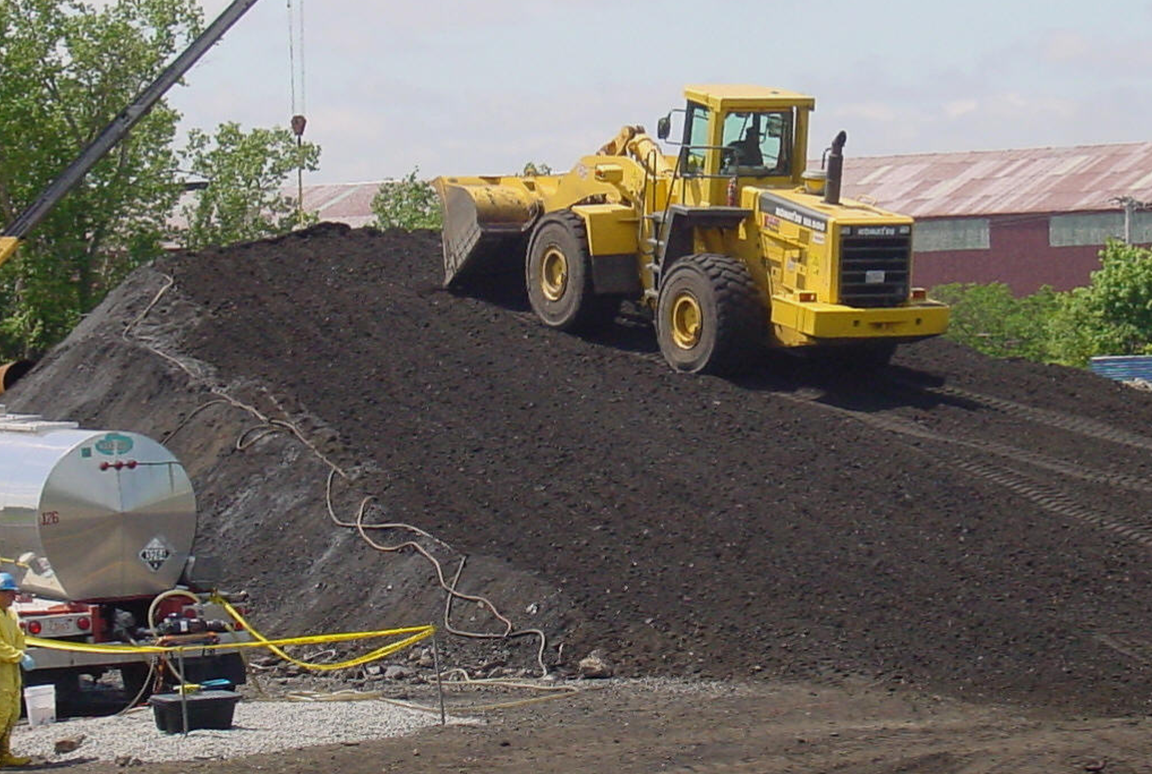
Stockpile Treatment
In the stockpile treatment method, chemical application is conducted as material is added to a stockpile
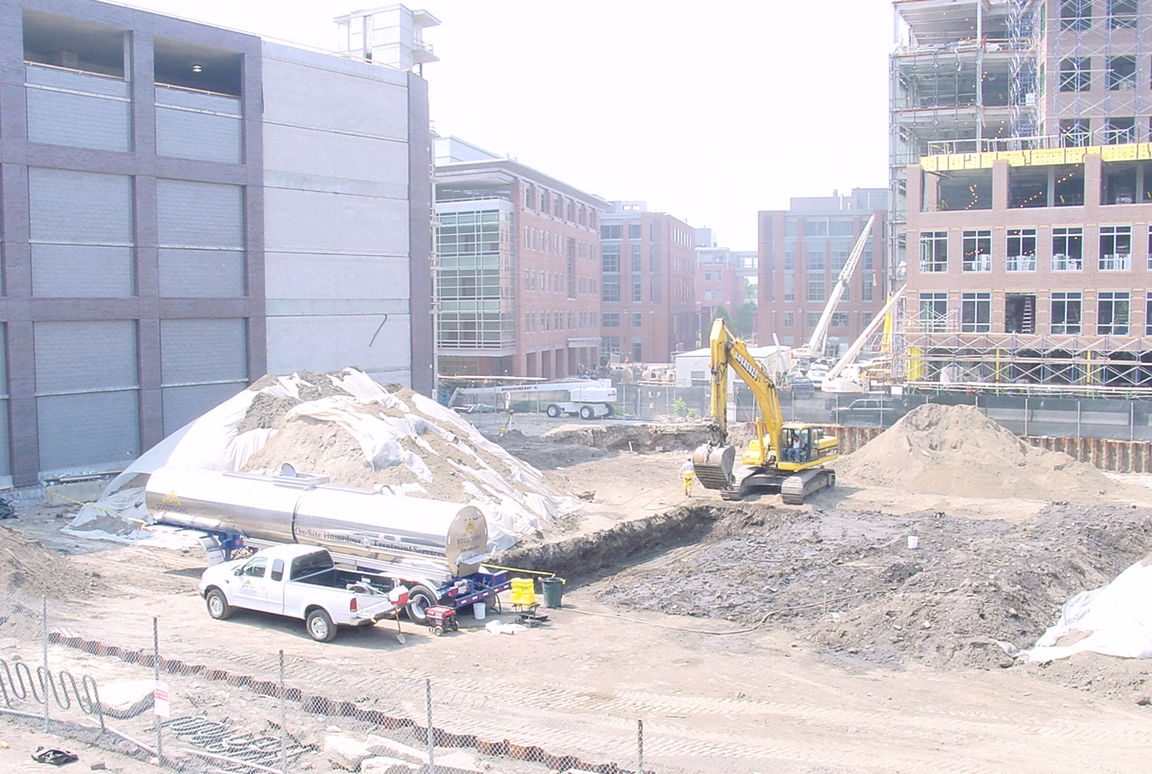
Surficial Treatment (Depths Under 3 ft)
The soil area is loosened and SSWT reagents are applied and mixed into the soil. When TCLP analysis confirms reduced levels of reachable metals, the soils can be disposed of or stockpiled.

Deep Excavation (Depths Over 3 ft)
For greater depths, treatment is conducted in a series of lifts to control the volume of soil treated. With this option, it is also possible to spray and treat buried debris.

Small Batch
SSWT can be applied for small batch applications of 20 tons or less. A small wet container with a sprayer is brought to the site so that treatment can be done in-situ.
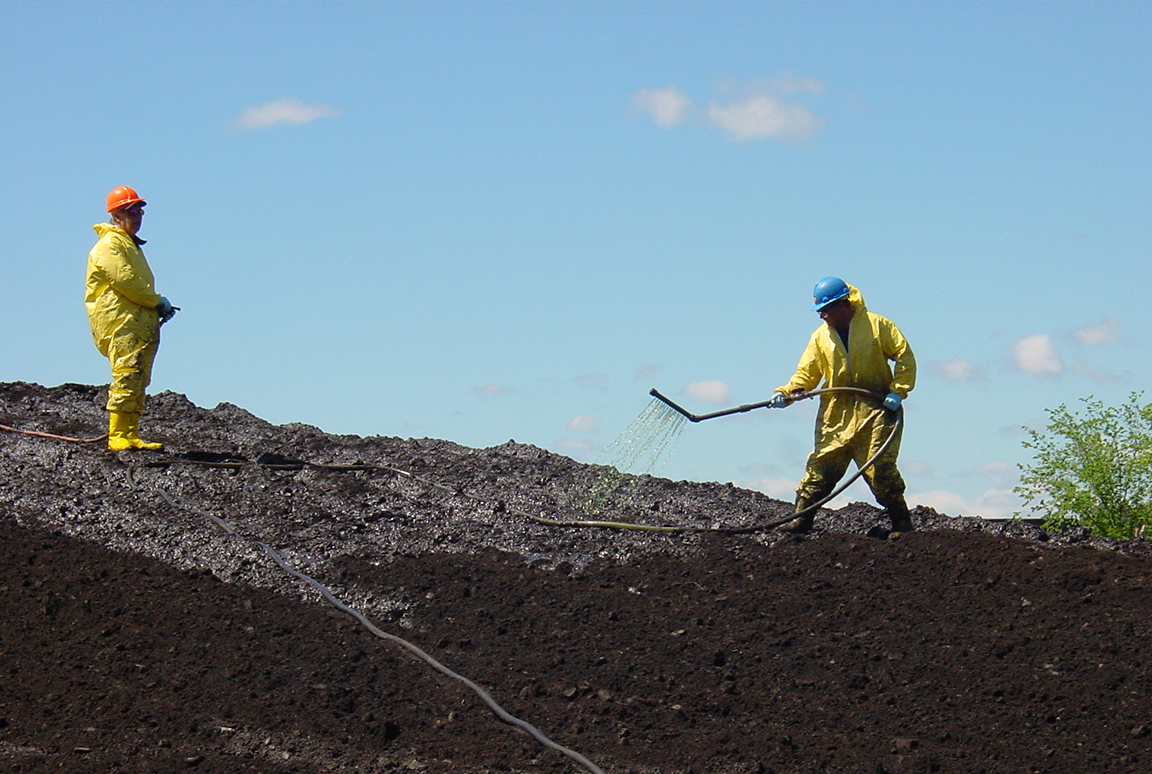
Lead Contaminated Debris

Get a Soil Treatment Evaluation
Featured Projects

Quest Technologies
Construction Site
Clifton, New Jersey
Quest Diagnostics
Soil Solutions HMR was the soil remediation contractor for Quest Diagnostic Headquarters in New Jersey, treating 25,000 tons of lead-contaminated soil

U. S. Forest
Service / Environmental
Contractors, Inc.
Warren, New Hampshire
Ore Hill Mine Site Restoration
Soil Solutions HMR treated the CERCLA abandoned mine tailings in Ore Mine Site Warren, NH ex-situ treatment of 50,400 tons of lead and zinc impacted soil.
